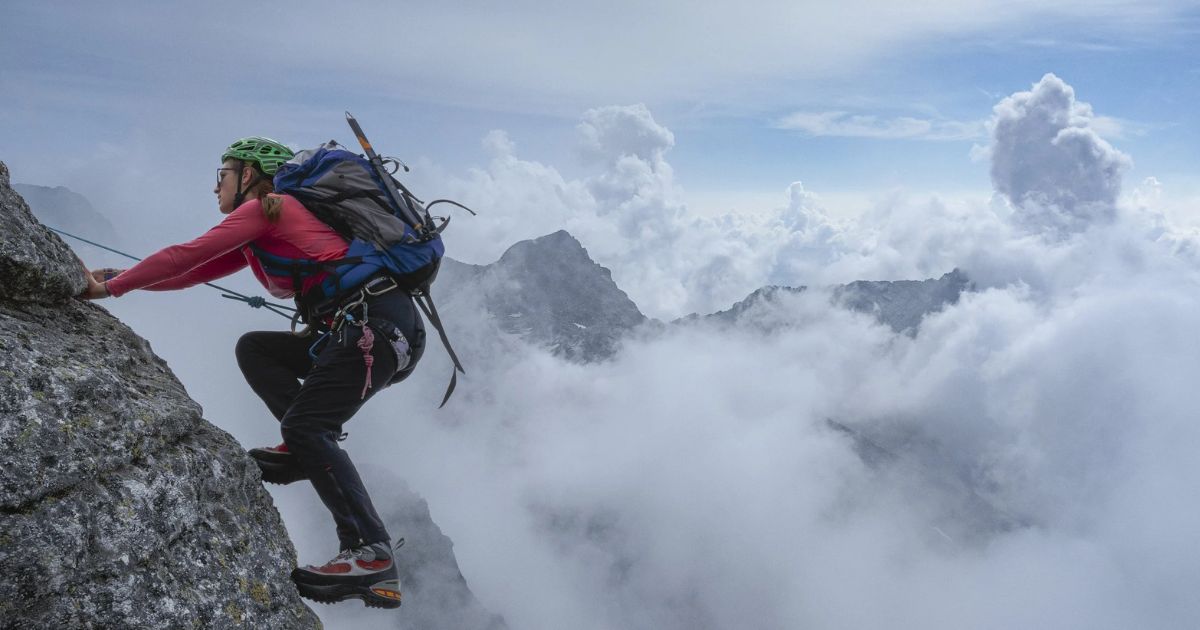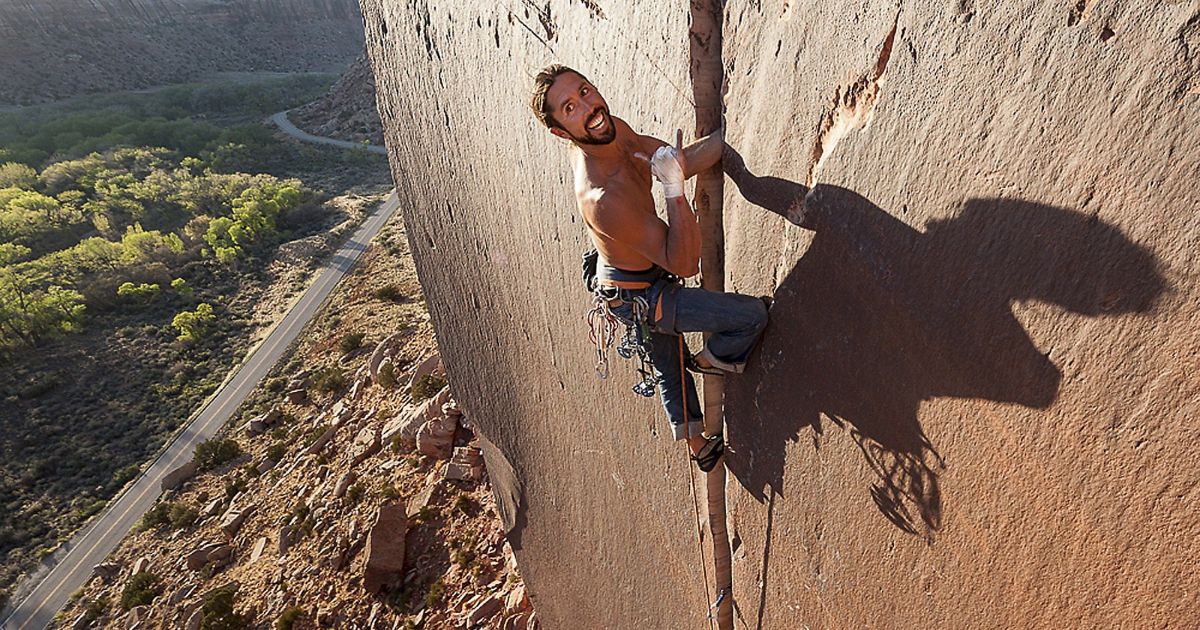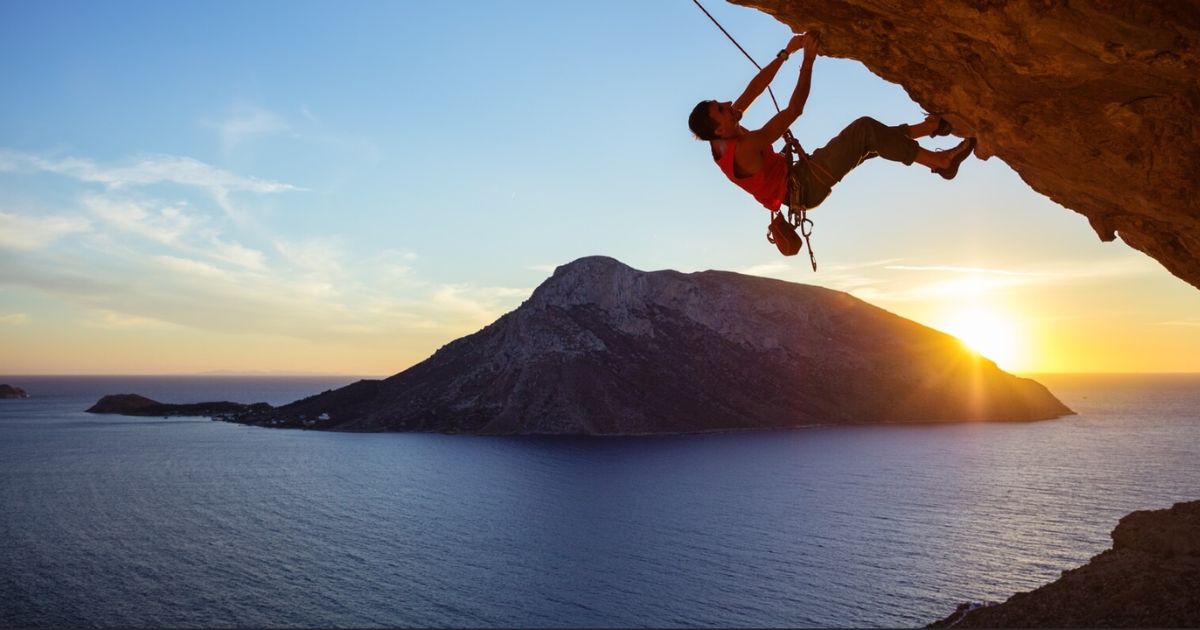Scaling the heights of rock climbing may seem like a thrilling adventure, but is it as dangerous as it appears? In this article, we delve into the statistics and explore the common hazards that climbers face. Assessing the risks, understanding safety equipment, and the importance of proper training and experience is crucial in ensuring a safe climb. So, grab your gear and join us as we navigate the rocky terrain of rock climbing safety.
Key Takeaways
- The majority of rock-climbing accidents are caused by human error.
- Proper training and experience are crucial for rock climbing safety.
- Adherence to safety measures can significantly reduce the likelihood of accidents.
- Common hazards in rock climbing include falling, equipment failure, and environmental hazards.
Rock Climbing Accidents: Understanding the Statistics
Rock climbing accidents can be better understood by analyzing the statistics surrounding them. While rock climbing is an adventurous and exhilarating sport, it comes with inherent risks. However, with the right safety measures and accident prevention strategies, the likelihood of accidents can be significantly reduced. Understanding the statistics related to rock climbing accidents is crucial for climbers to make informed decisions and take appropriate precautions.
According to research, the majority of rock climbing accidents occur due to human error rather than equipment failure. This emphasizes the importance of proper training and experience before attempting more challenging climbs. Additionally, statistics show that climbers who adhere to rock climbing safety measures, such as using appropriate gear, double-checking knots and anchors, and communicating effectively with their climbing partners, are less likely to experience accidents.
Common Hazards in Rock Climbing
When it comes to rock climbing, there are several common hazards that climbers need to be aware of. The first and most obvious is the risk of falling and sustaining injuries, which is always a concern when climbing at high altitudes.
Additionally, there is the potential for equipment failure, such as ropes or harnesses breaking, which can lead to dangerous situations. Lastly, climbers must also be cautious of the environmental hazards that are often present, such as loose rocks, unpredictable weather conditions, and wildlife encounters. Understanding and mitigating these hazards is crucial for a safe and successful climbing experience.
Falling and Injuries
Falls and injuries are inherent risks associated with rock climbing. While rock climbers take precautions to minimize these risks, accidents can still happen. Here are three common hazards that climbers face:
- Falling Prevention: Climbers use various techniques and equipment to prevent falls. This includes properly tying knots, using harnesses and ropes, and placing protective gear such as cams or nuts in cracks. Additionally, climbers often practice falling techniques to minimize the impact and reduce the risk of injury in case of a fall.
- Common Climbing Injuries: Despite precautions, climbers are susceptible to certain injuries. These include sprained or fractured limbs, cuts and abrasions, dislocations, and head injuries. Overuse injuries like tendinitis and pulley strains are also common due to repetitive movements and stress on the fingers and hands.
- Environmental Hazards: Rock climbers must also contend with environmental hazards such as loose rock, falling debris, and unpredictable weather conditions. These factors can increase the risk of accidents and injuries.
While rock climbing can be dangerous, climbers can mitigate risks by practicing falling prevention techniques, being aware of common climbing injuries, and staying informed about environmental hazards.
Equipment Failure Risks
Equipment failure is a significant risk in the inherently dangerous sport of rock climbing. Rock climbers heavily rely on their equipment to ensure their safety during their ascent. However, even the most well-maintained gear can fail, leading to potential accidents and injuries. Regular equipment maintenance and safety inspections are crucial in mitigating these risks.
To minimize the chances of equipment failure, climbers must diligently maintain their gear. This involves regularly checking for signs of wear and tear, such as frayed ropes or damaged carabiners. Additionally, climbers should follow manufacturer guidelines for equipment care and replace any worn-out or damaged gear promptly.
Safety inspections by experienced climbers or professionals can provide an extra layer of assurance. These inspections involve thorough examinations of all climbing equipment, including harnesses, ropes, helmets, and anchors. By identifying potential weaknesses or faults, climbers can address them before they become a hazard.
Proper equipment maintenance and regular safety inspections are essential practices to ensure a safe climbing experience. By taking these precautions, climbers can minimize the risk of equipment failure and enjoy their rock climbing adventures with confidence.
Environmental Hazards Present
One of the common hazards in rock climbing is the presence of environmental obstacles that climbers must navigate. These hazards can pose significant risks to climbers and require careful attention and planning. Some of the common environmental dangers in rock climbing include:
- Loose Rock: Loose rocks can be found on the climbing route, posing a threat to climbers. It is essential to be cautious and test the stability of rocks before relying on them for support.
- Weather Conditions: Climbers are exposed to the elements while ascending cliffs and peaks. Unpredictable weather conditions such as rain, wind, or extreme temperatures can increase the risk of accidents and hypothermia.
- Wildlife Encounters: In certain climbing areas, encounters with wildlife such as birds, snakes, or insects can occur. It is important to be aware of the local wildlife and take necessary precautions to avoid disturbing or being harmed by them.
Being aware of these environmental hazards and taking appropriate safety measures can help climbers mitigate risks and enjoy a safe and fulfilling climbing experience.
Assessing the Risks: Factors to Consider
When evaluating the safety of rock climbing, it is crucial to take into account various factors that contribute to the overall level of risk involved. Risk assessment in rock climbing involves considering both external and internal factors. External factors include the location, weather conditions, and the quality of the climbing equipment. It is important to assess the stability of the rock face and the potential for falling rocks or loose holds. Internal factors involve the climber’s experience, physical fitness, and mental preparedness.
A climber’s experience level and knowledge of climbing techniques can significantly affect their ability to assess risks and make safe decisions. Physical fitness is also important as it affects stamina and strength, which are crucial for safe climbing. Additionally, mental preparedness, including the ability to manage fear and make rational decisions under pressure, plays a vital role in risk assessment. By thoroughly considering these factors, climbers can make informed decisions and minimize the inherent risks associated with rock climbing.
Safety Equipment and Its Importance
Continuing the evaluation of risks in rock climbing, it is essential to emphasize the critical role of safety equipment in ensuring climbers’ well-being and reducing potential hazards. The importance of safety gear cannot be overstated, as it serves as a lifeline for climbers, providing protection and support in challenging situations. When it comes to choosing the right equipment, there are several factors to consider:
- Harness: A properly fitted harness is crucial for distributing the forces of a fall and preventing serious injuries.
- Helmet: Protecting the head from falling rocks or accidental impacts is essential for climbers’ safety.
- Climbing shoes: Choosing the right footwear with good grip and support can significantly enhance a climber’s performance and reduce the risk of slipping.
Proper Training and Experience: The Key to Safe Climbing
To ensure safe rock climbing, proper training and experience play a crucial role in complementing the use of safety equipment. While safety equipment provides a necessary layer of protection, it is the knowledge and skills acquired through training that truly enhances climber safety. Training techniques, such as practicing on artificial walls, can help climbers develop the necessary strength, balance, and agility required for rock climbing.
Additionally, learning safety protocols, such as proper belaying techniques and understanding rope management, is essential for preventing accidents. Experience also plays a vital role in safe climbing. The more a climber exposes themselves to various terrains and challenging routes, the better equipped they become to assess risks and make informed decisions. Ultimately, a combination of proper training and experience ensures that climbers can navigate the inherent dangers of rock climbing with confidence and expertise.
Climbing With a Partner: the Buddy System
When it comes to rock climbing, the buddy system is not just a nice-to-have, it’s a necessity. Climbing with a partner offers several advantages that can greatly enhance safety and overall experience. Firstly, there is safety in numbers, as having a partner means someone is always there to help in case of an emergency. Secondly, trust and communication are crucial in climbing, and a reliable partner can provide the support and encouragement needed to overcome challenges. Lastly, climbing with a partner means shared responsibility, where both individuals can actively look out for each other’s safety and well-being.
Safety in Numbers
Climbing with a partner, utilizing the buddy system, ensures a higher level of safety in rock climbing. The buddy system is a tried and true method in the climbing community, and for good reason. Here are three reasons why climbing with a partner is essential for safety:
- Enhanced Group Dynamics: Climbing with a partner fosters a sense of camaraderie and teamwork. Trust and effective communication are crucial when facing the inherent risks of rock climbing. Having a partner by your side allows for better coordination, problem-solving, and support.
- Improved Risk Management: Two heads are better than one when it comes to risk assessment and decision-making. With a partner, you can share the responsibility of evaluating the route, identifying hazards, and making informed choices. This collaborative approach helps minimize the chances of accidents and increases overall safety.
- Emergency Assistance: In case of an emergency, having a climbing partner can be a lifesaver. They can provide immediate help, whether it’s administering first aid, calling for help, or performing a rescue. The presence of a partner reduces the response time and significantly enhances the chances of a successful outcome.
Trust and Communication
Utilizing a reliable climbing partner enhances trust and communication, ensuring a safer and more efficient rock climbing experience. In the world of rock climbing, trust is paramount. Trusting your partner with your life is not something to be taken lightly. Building trust starts with selecting a partner who is experienced, reliable, and shares your commitment to safety. Trust-building exercises, such as practicing rope management and belaying techniques, can also strengthen the bond between climbing partners.
Effective communication strategies are equally important. Clear and concise communication can prevent misunderstandings and help climbers work together seamlessly. Using verbal cues, and hand signals, and establishing a system of communication before ascending can make a significant difference in the overall climbing experience. Trust and communication go hand in hand, creating a strong foundation for the shared responsibility and support that we will explore in the next section.
Shared Responsibility and Support
To ensure safety and provide mutual assistance, rock climbers often rely on the buddy system, where they partner up and share the responsibility of climbing together. The buddy system is a fundamental aspect of rock climbing that emphasizes shared responsibility and community support. Here are three key benefits of climbing with a partner:
- Increased safety: Climbing with a partner means having someone to watch your back and ensure your safety. They can spot potential dangers, offer guidance, and provide immediate assistance in case of accidents or emergencies. The shared responsibility of looking out for each other significantly reduces the risk of accidents and enhances overall safety.
- Motivation and encouragement: Rock climbing can be mentally and physically demanding, and having a partner by your side can provide much-needed motivation and support. They can cheer you on, offer advice, and help you push through challenging sections. The sense of belonging to a climbing community fosters camaraderie and encourages climbers to reach their full potential.
- Skill development: Climbing with a partner allows for the exchange of knowledge and skills. You can learn from each other’s experiences, techniques, and strategies, leading to continuous growth and improvement. Sharing responsibility means that you can take turns leading climbs, giving each partner the opportunity to develop leadership skills and expand their climbing abilities.
Tips for Staying Safe on the Rock Face
Rock climbers can enhance their safety on the rock face by incorporating proper equipment and techniques. Staying safe on the rock face requires both mental preparation and physical conditioning. Before starting a climb, it is essential to mentally prepare by evaluating the route, identifying potential hazards, and visualizing successful moves. This mental preparation helps climbers stay focused and make informed decisions while on the rock face.
Additionally, maintaining physical conditioning is crucial to prevent injuries. Regular strength training, flexibility exercises, and cardiovascular workouts can improve a climber’s overall fitness and endurance, making them less prone to fatigue and accidents. It is also essential to use appropriate safety equipment, such as a helmet, harness, and ropes, to minimize the risk of falls or injuries. By prioritizing mental preparation, physical conditioning, and proper equipment, climbers can enjoy the thrill of rock climbing while minimizing the dangers associated with the sport.
Frequently Asked Questions
How Long Does It Take to Become Proficient in Rock Climbing?
Becoming proficient in rock climbing requires a combination of training techniques and psychological factors. The time it takes to achieve proficiency varies depending on individual commitment, physical ability, and access to climbing resources.
Are There Any Age Restrictions for Rock Climbing?
Age restrictions for rock climbing should be carefully considered to ensure the safety of participants. While physical limitations may exist, it is important to provide opportunities for individuals of all ages and abilities to engage in this exhilarating sport.
What Are Some Common Misconceptions About Rock Climbing Safety?
Common misconceptions about rock climbing safety include the belief that it is extremely dangerous and that accidents are common. However, rock climbing accidents and injury statistics show that with proper training, equipment, and precautions, it can be a safe and enjoyable activity.
What Is the Best Type of Safety Equipment for Rock Climbing?
When it comes to rock climbing, ensuring the best type of safety equipment is crucial. Brands such as Black Diamond and Petzl offer high-quality gear that provides the necessary protection. Proper fit is of utmost importance, as it significantly enhances safety and performance.
How Often Should Safety Equipment Be Inspected and Replaced?
The frequency of inspecting and replacing safety equipment in rock climbing is of utmost importance. Regular inspection ensures that the equipment is in optimal condition, reducing the risk of accidents and enhancing the overall safety of climbers.
Conclusion
In conclusion, rock climbing can be a dangerous activity if proper precautions are not taken. However, by understanding the statistics, assessing the risks, using safety equipment, and receiving proper training, climbers can significantly reduce the chances of accidents. One interesting statistic to note is that according to a study, about 82% of rock climbing accidents occur due to human error, highlighting the importance of experience and knowledge in ensuring a safe climbing experience.










